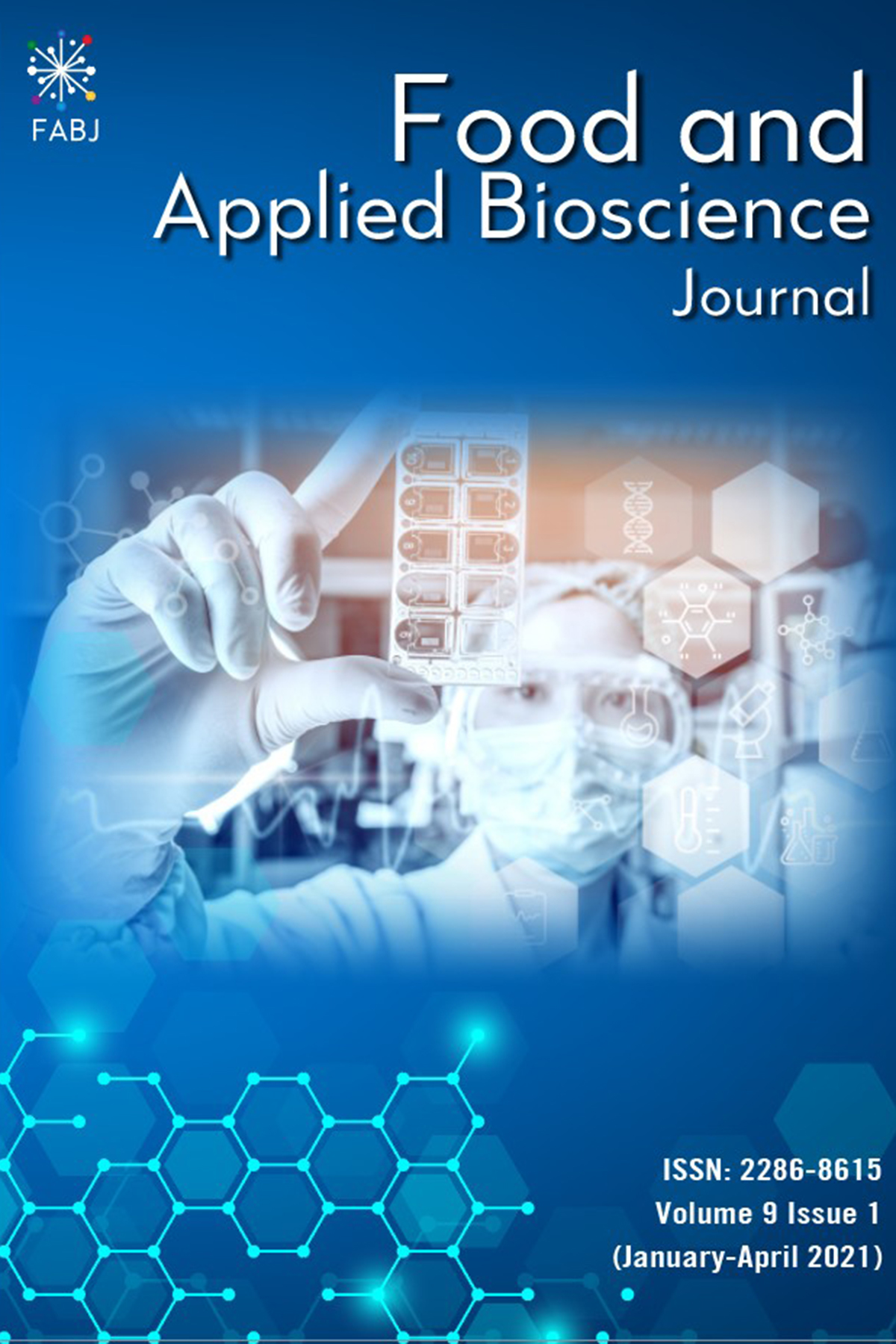Effect of pre−treatments and freezing methods on frozen mulberry qualities for fresh fruit consumption
Keywords:
Mulberry fruits, pre−treatment, firmness, air−blast freezing, fresh fruit consumptionAbstract
After short annually harvesting period, fresh mulberry fruits are perishable easily because of their soft texture. This study was to investigate the effect of pre−treatment and freezing methods on frozen mulberry fruits for off−season fresh fruit consumption. There were two methods including pre−treatments for firmness and sanitizing qualities. Soaking in 2% (w/w) calcium chloride for 10 min at room temperature was the most appropriate treatment providing fruit firmness
(41.58 ± 10.50 N of firmness), meanwhile adding of 0.3% (w/w) calcium hypochlorite into 2% (w/w) calcium chloride solution provided the greatest inhibitory effect (less than 1×105 CFU/g of microbial load). Among three freezing methods (household freezing at −18°C, air−blast freezing at −25°C and cryogenic freezing with liquid nitrogen), cryogenic freezing provided the shortest freezing time (only 0.47 min). There were textures cracking occurred in some cryogenic frozen samples due to extreme low temperature. Air−blast freezing was considered as the most suitable for mulberry fruit freezing due to its lower drip loss and higher firmness after thawing with reasonable freezing time (26 min). In addition, among frozen mulberry fruits, air-blasted samples gave the highest Hedonic scores in terms of texture and overall acceptance qualities (5.94 ± 1.58 and 6.16 ± 1.49, respectively). Therefore, air−blast freezing had the most potential freezing method suggesting for fresh fruit consumption.






